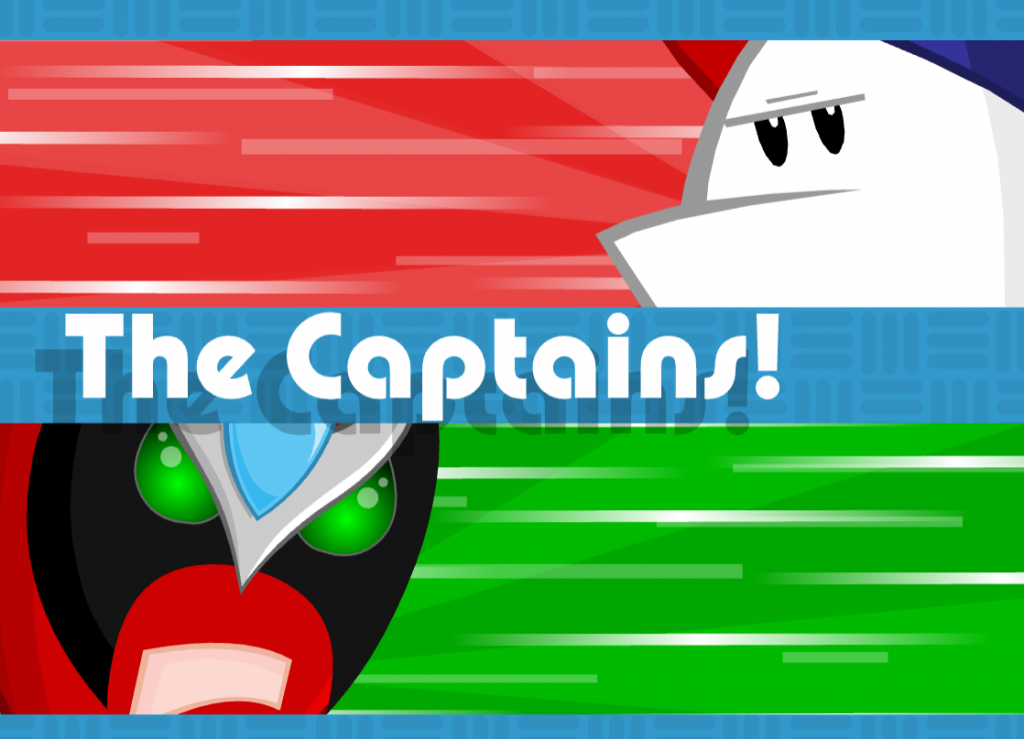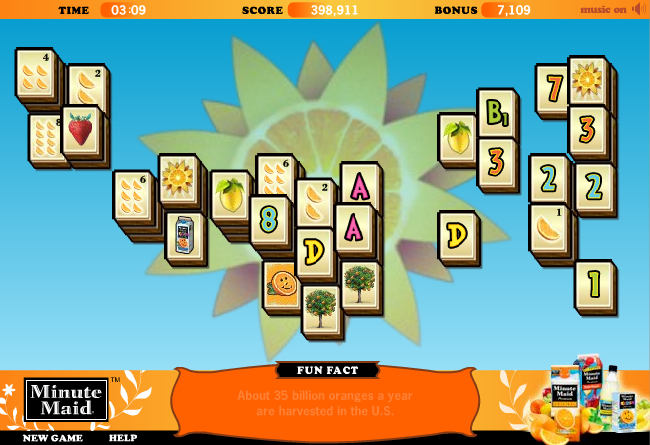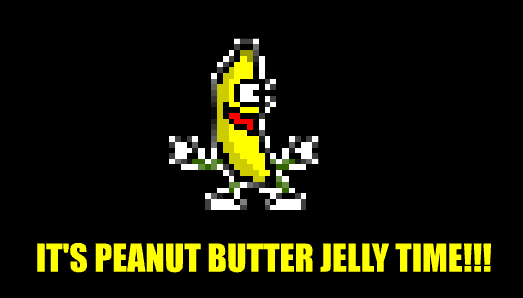Great news for everyone concerned about the Flash end of life planned for end of 2020: The Internet Archive is now emulating Flash animations, games and toys in our software collection.
Utilizing an in-development Flash emulator called Ruffle, we have added Flash support to the Internet Archive’s Emularity system, letting a subset of Flash items play in the browser as if you had a Flash plugin installed. While Ruffle’s compatibility with Flash is less than 100%, it will play a very large portion of historical Flash animation in the browser, at both a smooth and accurate rate.
We have a showcase of the hand-picked best or representative Flash items in this collection. If you want to try your best at combing through a collection of over 1,000 flash items uploaded so far, here is the link.
You will not need to have a flash plugin installed, and the system works in all browsers that support Webassembly.
For many people: See you later! Enjoy the Flash stuff!
Others might get this far down and ask “And what exactly is Flash?” or even “I haven’t thought about Flash in a very long time.” For both of these groups, let’s talk about Flash and what it represented in the 1990s and 2000s.
A Short History of of the Rise of Flash
In the early 1990s, web browsers were incredibly powerful compared to what came before – with simple files written in HTML that could generate documents that were mixing images and text, as well as providing links to other websites, it felt like nothing for computers had ever had this level of ease and flexibility. It really did change everything.
But people didn’t stay in a state of wonder.
It quickly became a request, then a demand, then a mission to allow animation, sound, and greater audio/video flexibility into webpages. A huge range of companies were on a mission to make this happen. While looking back it might seem like one or two tried, it was actually a bunch of companies, but out of the wreckage of experimentation and effort came a couple big winners: Shockwave and Flash.
Flash had once been called SmartSketch in 1993, which was rewritten as FutureWave, and was actually a challenger to Shockwave until purchased by Macromedia, who handled creation software and playback software for both products.
Flash had many things going for it – the ability to compress down significantly made it a big advantage in the dial-up web era. It could also shift playback quality to adjust to a wide variety of machines. Finally, it was incredibly easy to use – creation software allowed a beginner or novice to make surprisingly complicated and flexible graphic and sound shows that ran beautifully on web browsers without requiring deep knowledge of individual operating systems and programming languages.
From roughly 2000 to 2005, Flash was the top of the heap for a generation of creative artists, animators and small studios. Literally thousands and thousands of individual works were released on the web. Flash could also be used to make engaging menu and navigation systems for webpages, and this was used by many major and minor players on the Web to bring another layer of experience to their users. (There were, of course, detractors and critics of use of Flash this way – accessibility was a major issue and the locked-in nature of Flash as a menu system meant it was extremely brittle and prone to errors on systems as time went on.)
This period was the height of Flash. Nearly every browser could be expected to have a “Flash Plugin” to make it work, thousands of people were experimenting with Flash to make art and entertainment, and an audience of millions, especially young ones, looked forward to each new release.
However, cracks appeared on the horizon.
The Downfall of Flash
Macromedia was acquired by Adobe in 2005, who renamed Flash to Adobe Flash and began extensive upgrades and changes to the Flash environment. Flash became a near operating system in itself. But these upgrades brought significant headaches and security problems. Backwards compatibility became an issue, as well as losing interest by novice creators. Social networks and platforms became notably hostile to user-created artworks being loaded in their walled gardens.
It all came to a head in 2010, when Apple CEO Steve Jobs released an open letter called “Thoughts on Flash”. The letter was criticized and received strong condemnation from Adobe, and Apple ultimately backed off their plan (although work was done to support alternate tools).
The call-out, even if not initially successful, ended the party.
In November of 2011, Adobe announced it was ending support of Flash for mobile web browsers, and in 2017, announced it was discontinuing Flash altogether for 2020.
Flash’s final death-blow was the introduction of HTML 5 in 2014. With its ground-up acknowledgement of audio and video items being as important as text and images, HTML 5 had significant support for animation, sound and video at the browser level. This mean increased speed, compatibility, and less concern about a specific plugin being installed and from what source – audio/video items just worked and Flash, while still used in some quarters and certainly needed to view older works, stopped being the go-to approach for web designers.
What Are We Losing When We Lose Flash?
Like any container, Flash itself is not as much of a loss as all the art and creativity it held. Without a Flash player, flash animations don’t work. It’s not like an image or sound file where a more modern player could still make the content accessible in the modern era. If there’s no Flash Player, there’s nothing like Flash, which is a tragedy.
As you’ll see in the collection at the Archive, Flash provided a gateway for many young creators to fashion near-professional-level games and animation, giving them the first steps to a later career. Companies created all sorts of unique works that became catchphrases and memes for many, and memories they can still recall. Flash also led to unusual side-paths like “advergames”, banners that played full games to entice you to buy a product. Clones of classic arcade games abounded, as well as truly twisted and unique experiences unfettered by needing a budget or committee to come to reality. A single person working in their home could hack together a convincing program, upload it to a huge clearinghouse like Newgrounds, and get feedback on their work. Some creators even made entire series of games, each improving on the last, until they became full professional releases on consoles and PCs.
Why We Emulate Flash
The Internet Archive has moved aggressively in making a whole range of older software run in the browser over the past decade. We’ve done this project, The Emularity, because one of our fundamental tenets is Access Drives Preservation; being able to immediately experience a version of the software in your browser, while not perfect or universal, makes it many times more likely that support will arrive to preserve these items.
Flash is in true danger of sinking beneath the sea, because of its depending on a specific, proprietary player to be available. As Adobe Flash is discontinued, many operating systems will automatically strip the player out of the browser and system. (As of this writing, it is already coming to fruition a month before the end-of-life deadline.) More than just dropping support, the loss of the player means the ability of anyone to experience Flash is dropping as well. Supporting Ruffle is our line in the sand from oblivion’s gaze.
Credit Where Due
This project is by no means an Internet Archive-only production, although assistance from Dan Brooks, James Baicoianu, Tracey Jacquith, Samuel Stoller and Hank Bromley played a huge part.
The Ruffle Team has been working on their emulator for months and improving it daily. (Ruffle welcomes new contributors for the project at ruffle.rs.)
The BlueMaxima Flashpoint Project has been working for years to provide a desktop solution to playable web animation and multimedia, including Flash. Clocking in at nearly 500 gigabytes of data and growing, the project is located here: https://bluemaxima.org/flashpoint/
A shout-out to Guy Sowden, who first drafted the inclusion of Ruffle in the Emularity before it was refined elsewhere; your efforts set the ball rolling.
And finally, a huge thanks to the community of Flash creators whose creative and wonderful projects over the years led to inspiration in its preservation. We hope you’ll like your new, permanent home.
Bonus Section: Adding Your Own Flash Animations to the Archive!

For the creators, artists and collectors who have .swf files from the era of Flash and would like to see them uploaded to the Archive and working like our collection, here’s some simple instructions to do so.
Please note: Ruffle is a developing emulator, and compatibility with SWF files is continually improving but is not perfect. They have provided a test environment here to see if your SWF file will work. Please take the time to test before uploading to the Archive.
The Archive looks for one mediatype setting (software) and two metadata pairs set (emulator and emulator_ext) to know whether an item can be run in the Ruffle emulator. Here are those two settings:
emulator set to ruffle-swf
emulator_ext set to swf
The emulator only works with a single SWF file at the moment, which should have no spaces in it. With all these conditions in place, the swf item should be offered up to play and the emulator should work.
When uploading to the Archive, accurate or complete descriptions, title, creation date, are all optional but strongly encouraged to provide context for users. Additionally, if you create an image file (jpg, png or gif) and name it itemname_screenshot.ext,, like itemname_screenshot.png, it will become the official screenshot and thumbnail for the item. Notice how we named things here:
https://archive.org/download/flash_loituma
We’re here to help you if you run into any snags or issues. There’s no other location on the internet that does things quite this way, so if you do run into problems, feel free to mail Jason Scott about tech support and whatever assistance can be given will be provided.
Update: Read about how this new adventure of Flash has had an effect on the Web.







The paragraph about Steve Jobs and Apple contains multiple inaccuracies.
iOS never supported Flash.
Apple never changed its plan.
Adobe was never able to demonstrate Flash running effectively in a mobile device; they produced a stripped-down version for Android that had a small subset of features.
Ultimately, Google and Microsoft also said Flash was unsupportable between technical debt and security flaws and overhead.
No real version of Flash ever shipped on Microsoft phones, either
Beat me to it.
It’s unfortunate that your corrections also contain a very serious inaccuracy. Flash Player on Android was not a stripped down subset. It was the same full browser plugin as desktop. You are probably thinking of Flash Lite, which was indeed a subset designed to run on old feature phones. However, I don’t recall that ever being available on Android. For Flash developers, it was a big deal at the time to see Adobe bring the real Flash Player to a mobile platform instead of Flash Lite.
The only feature that the supposed “stripped down” version actually lacked was loading in additional swf files for code. And in fact, it was the opposite of stripped down, since it was AIR and had access to all that fun stuff to dangerous for the web.
for security reason you right but flash swf is very nice animation and graphic.
Sorry, Glenn, that’s incorrect.
Awesome did have an unlaunched iOS player plugin working; they had shown videos of out. At the time, the struggle was that Adobe wanted Some to allow browser plugins similarly to the desktop. For a while it seemed Apple would eventually cave, bit then the letter came out and put that to rest.
Apple did indeed have though. You will recall they were going to forbid running apps created in a different language (basically any kind of VM) in the app store. They reverted that course and that’s what allowed Flash created apps to be released in the store, via Adobe Air. If they hadn’t done that, we wouldn’t have Unity games in the app store either, since it’s more or less the same prices as Adobe Air.
Believe it or not, my Droid 4 smartphone initially came with firmware that had full desktop Firefox as well as Flash. It played Flash games perhaps a little slow, but otherwise just fine. It was quite an interesting environment.
I agree with you, this game was slow but very attractive
Your comment was interesting
Please capture enigmaco.de, it has a fun enigma system emulator I use in classes…
Try this one. It’s a great Enigma simulator, and you can even change the code if you want. Runs straight from the page, only uses Javascript.
https://observablehq.com/@tmcw/enigma-machine
There is no sound in Safari when playing the Loituma girl flash. Ruffle does work in Safari because I’ve tried their demo, and it works with sound there. Is there perhaps something wrong with the embedding that makes sound not work in the Internet Archive?
Submit a bug report: https://github.com/ruffle-rs/ruffle/issues
Another user says: Bugs gonna bug, I guess. It’s in development. Loituma Girl runs with recorded soundtrack on my Microsoft Surface Go tablet, unlocked, in the Opera browser. Did you play “Breaking the Bank”? (just under the heading, “A Short History of of the Rise of Flash”). Did you get the sound? More important, did you get the money? 😉
There are a lot of old sites in the Internet Archive (like http://omegadrivers.net/ , for instance) that used to use small Flash applets for menus and navigation. Are there any plans to automatically make these applets run with Ruffle? Or are these parts of the Internet Archive going to be be completely inaccessible?
You should probably scrape and archive swfchan.com, as it has archived flashes uploaded to 4chan’s /f/ board for years and deduplicated them by contents and organized by most popular name.
But will it play the Homestuck Flash games…?
hey, check this out!
https://bambosh.github.io/unofficial-homestuck-collection/
it has a fun enigma system emulator I use in classes
Why not convert them with Adobe Animate, they can be played as HTML5 when converted.
Dear old z0r.de
Please copy everything from newgrounds. That site has so so much great flash stuff!
It’s worth noting Newgrounds is also making an active effort to integrate ruffle into the website, helping quick the flash content playable in its original upload location. I believe one of its lead developers, Herschel, is a former Newgrounds employee.
Definitely worth archiving NG’s content regardless, though! 🙂
Newgrounds is already preserving their flash content themselves
Can you ask Microsoft to contribute all of its zone.com Flash games, such as Bejeweled, Atomica, Cubis, Alchemy, Zuma and Hexic, to your archive?
In education, some presentations produced using Microsoft powerpoint included Flash media content. Will this emulator help with such content?
Also is there a converter available to produce open source file format equivalents?
This animation is very interesting
They have a very attractive architectural system
I use them a lot
Brilliant work!
My wife is very upset that Farmville is going away at the end of the year. This is a FB/Flash social game she’s been playing for 11 years and has a big built up community. I imagine preserving this is hard or impossible, since it requires a back-end social infrastructure, not just a flash emulator. But it’s a shame that this community is going to die when it doesn’t have to.
This is also regarding Farmville. Millions of people all over the world have been playing it since its inception eleven years ago. We have developed international social networks, and many of us have survived difficult personal challenges through playing Farmville rather than self-medicating with alcohol or other drugs. Efforts to persuade Zynga to save the original game by switching it to a new platform were unsuccessful. Maybe they thought that the millions of original FV players would switch to FV2 or another of their games. This is not likely for many reasons. The newer versions of FV as well as other Zynga games, have very different graphics that are clunky and not necessarily appealing aesthetically to those used to the original. Many people on FV related social media sites have vowed to never again play a Zynga game. In addition to losing our FV communities, we are losing hours and hours of investment in building our “farms” which can be quite elaborate and creative after 11 years. The death of FV is on Dec. 31st so little time remains to save it, but if there was a way for the Internet Archive to accomplish a miraculous resurrection of it, millions of people around the world would be filled with gratitude, and I wouldn’t be surprised if some of them become donors.
My wife is very upset that Farmville is going away at the end of the year. This is a FB/Flash social game she’s been playing for 11 years and has a big built up community. I imagine preserving this is hard or impossible, since it requires a back-end social infrastructure, not just a flash emulator. But it’s a shame that this community is going to die when it doesn’t have to.
some presentations produced using Microsoft powerpoint included Flash media content. Will this emulator help with such content?
Since the late 90s there are too many content created using shockwave flash and related to the development of great stuff like animations, games, loops and interactive videos, etc. It’s great to be able to rescue all that content (and it’s a shame that Adobe and Co. have forced the withdrawal of Flash to impose HTML5). I loved the references to classic memes in the post, especially the Loituma Girl and Caramelldansen <3
It also causes me a lot of nostalgia since I saw them on sites like 4chan or Newgrounds …it has been more than a decade but for me it seems like yesterday. Oh man, time flyes -_-
PS: It would be nice if all flash loops from sites like z0r and Swfchan could be backed up here :3
Starting in the late 1990s, flash animation was a massively important outlet for underground animation in China, into the ’00s. A lot of this stuff was so ephemeral, but still highly influential and representing a significant independent/radical arts practice in China. It would be amazing if some of that work could be archived here. FlashEmpire was one of the biggest platforms for this work – it comes up via the Wayback Machine, but I don’t know if this means there’s a chance the flash films could be snagged for saving…?
it has archived flashes uploaded to 4chan’s f board for years and deduplicated them by contents and organized by most popular name.
Pingback: Flash, Undead with Support from Internet Archive – Laurie N. Taylor, Librarian
That’s great!
The article summarises it correctly: Flash was closed and proprietary flash was closed and proprietary, but a great deal of creativity was brought out in it, and it’s part of the Internet’s history.
I have a question: Are there plans to utilise the emulation in the waybackmachine to animate Flash files captured with webpage?
Actually two: Are there plans to support playing a bunch of Flash files uploaded in a single item? I have a couple of short series that I would like to upload, and the episodes of each would better be kept together.
Why not convert them with Adobe Animate, they can be played as HTML5 when converted.
That would require having the original project files
Greets from Syberia for ALL!
I have collection of flash demo-scene, toons and games. How can I upload to you?
And wish that will possible to download files from antire list https://archive.org/details/softwarelibrary_flash
There is no sound in Safari when playing the Loituma girl flash. Ruffle does work in Safari because I’ve tried their demo, and it works with sound there. Is there perhaps something wrong with the embedding that makes sound not work in the Internet Archive?
Why would you use the peanut butter jelly time GIF, one of the most famous GIFs of all time, for a Flash article? Also, this has been written 10,000 times before.
The history of Peanut Butter Jelly time: https://knowyourmeme.com/memes/peanut-butter-jelly-time
Despite it’s death we still don’t have any good ways of performing vector animations. SVG animations are severely limited and to do it with Canvas you need your own framework to draw and key-frame with. I think Flash is still far superior to what we have today.
Where can we suggest Flash sites for archiving?
I’d like to make sure Ferry Halim’s games at Orisinal aren’t lost & forgotten.
swfchan as it already collects a lot of archives and will try to apply ruffles to their database